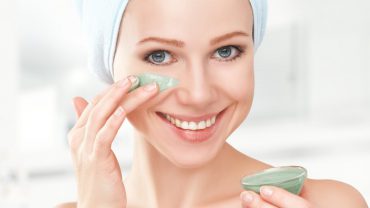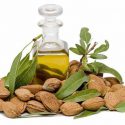These Mistakes Shouldn’t Be Made. Henna Hair Colouring
Colouring hair with henna, as it’s with regular hair dyes, is recognized as very popular. Henna isn’t only a 100% natural colourant but also it delivers natural-looking effects. However, changing hair colour due to henna isn’t simple. Keep reading the article to find out which mistakes you should stay away from while applying henna in order to obtain the hair colour you want.
1. You don’t analyse the composition
This is the most common mistake made while applying henna. Aftermath? You frequently apply knockoffs or very poor in quality henna that damage strands and irritate scalp. What’s ever worse, the final effect of hair colouring is completely different from the looked-for and described on the packaging. Also, if you don’t read the list of ingredients then it’s highly possible that you don’t read the instructions for use either. After all, why would you have to waste time on reading the instructions if you have already heard how to do it, or seen some article devoted to this topic on the internet. Unfortunately, such strategy might appear to be disastrous because not each tip taken from the internet or your friends’ pieces of advice will work on your hair equally good.
2. Henna colours all types of hair alike
It isn’t true. The effect of colouring depends on: colour and type of hair, care provided to hair before applying henna, type of henna, the time you let henna sit on your hair, the way you prepared henna for the procedure, post-colouring hair care and the state of your organism.
3. Inadequate henna preparation
This can be caused either by the lack of or confusingly-written instructions. You must realize that there are a few ways which henna can be prepared in. For example, if you cover this natural colourant with boiling water then you can’t expect to obtain good effects. If you add too much water then the mixture won’t colour your hair at all; instead, it’ll run down the hair without affecting it. Can you spot lumps in your henna mixture? That’s bad, too.
4. Too little henna used in comparison to the hair length and thickness
Using too little colourant makes it impossible to coat hair the right way. If you are a beginner, don’t be afraid to apply plenty of henna. After all, it’s better to use a little bit more of this natural colourant and obtain more intensive colour than having problems with noticing any changes in your hair appearance. After undergoing a few treatments you will learn how much henna your hair needs.
5. You’re not diligent enough
Basically, neither seamless colour nor intensive shade will be possible to obtain if you don’t coat all your hair with henna evenly. As it’s easy to guess, the final effect will be far from intended when you apply more henna to some strands leaving the remaining ones uncoated with the colourant. Moreover, the colour that you were looking for get will definitely differ from the one which has just appeared on your strands. How to do it the right way? Start applying henna from the roots, so from the forehead line and on the parting. Then go on applying the colourant to the behind ear area, near the scalp and, finally, coat the lengths.
6. You let henna sit either too long or too short
It’s worth realising that henna may cause dehydration of hair and scalp irritation if left on for too long. Of course, the final colouring effect will also be completely different, definitely worse. Similar outcomes will be delivered if you let the colourant sit not long enough. Basically, keeping henna on hair for an hour should do the trick. However, if this is your first time applying henna, it’s suggested letting it sit for 30 minutes only. Half an hour should be enough to obtain the right colour without weakening your hair. Naturally, if keeping henna on your hair for 30 minutes doesn’t bring out satisfactory effects, extend this time and remember to observe how your hair reacts to this treatment.
7. Add-ins in henna
There are various additional substances that henna might go with. Some of them intensify or weaken the final effect. In short, the add-ins might extend the lifespan of effects, change hair colour or improve the state of strands. It’s also worth realizing that extra ingredients may contribute to washing down the pigment so the colour of hair will be changing with every shampooing. Also, the scalp might be left irritated. Therefore, before you apply henna to your hair, run a patch test first.
8. You don’t protect skin against staining
Indeed, henna stains and the marks it leaves are really hard to remove. The most prone to staining are: forehead, ears, neck and fingernails. Therefore, if you want to stay away from stains, coat the very body parts with a cream, oil or Vaseline. Also, put on a rubber gloves to keep your hands clean.
9. Imprecise hair cleansing before the colouring
Sebum, cosmetic residues, dandruff and other impurities can impede proper henna application and appearance of the looked-for colour. Simply, henna penetrate clean hair better and easier. Therefore, before you put henna on the hair, make sure that the strands are clean, dry and detangled. Thanks to all of these, the final effect will be way better and more durable.






Leave a Reply